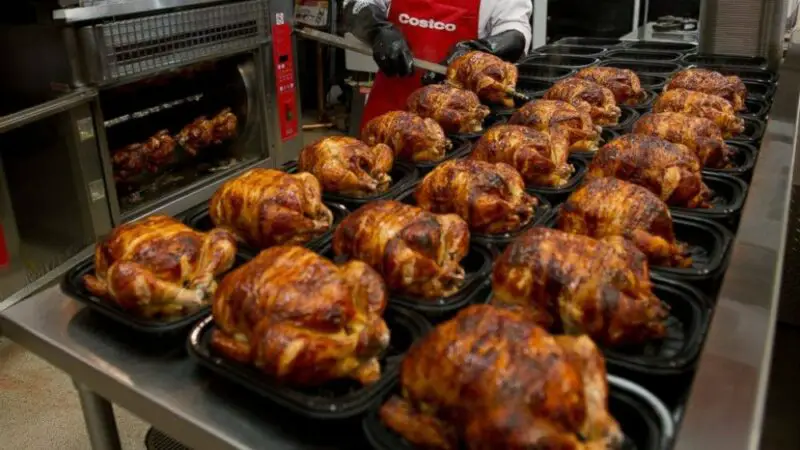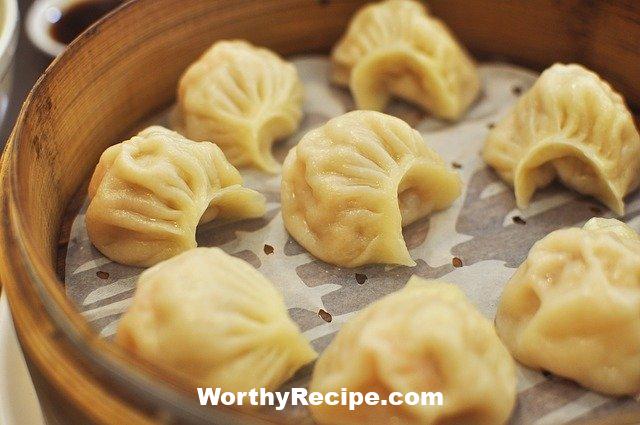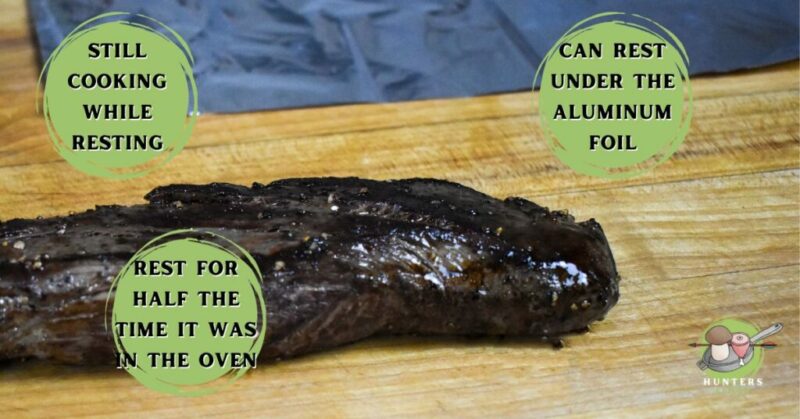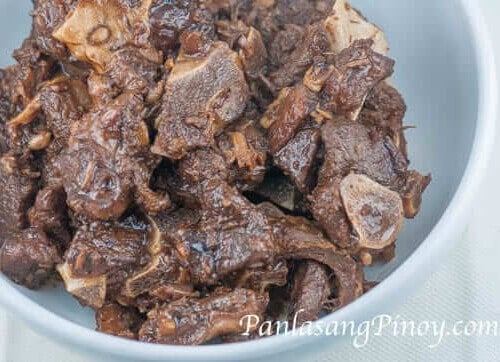The Ultimate Guide to Choosing the Best Oil for Frying Dumplings
Fried dumplings are a popular delicacy enjoyed by many people around the world. One of the essential factors for achieving crispy and delicious fried dumplings is the type of oil used in the frying process. Different oils have varying smoke points, nutritional values, and flavors that could significantly affect the final taste and texture of fried dumplings. In this article, we will provide an ultimate guide on how to choose the best oil for frying dumplings by examining various factors to consider when selecting oils, recommended oils, optimal temperature ranges for frying with different oils, tips for frying dumplings, storage tips for oils.
Understanding Different Types of Oils for Frying
Before we delve deeper into selecting oils for frying dumplings, it’s crucial to understand different types of cooking oils available. Cooking oils come from different plants or animals with distinct chemical and physical properties that affect how they behave when heated up.
Oils can be classified based on their chemical structure into two categories: saturated and unsaturated fats. Saturated fats are primarily found in animal products like butter, lard, and coconut oil, while unsaturated fats come from plants and include olive oil, canola oil, and sunflower oil.
The second classification is categorized according to their smoking points. The smoking point is defined as the temperature at which an oil begins to break down and produce smoke. High heat causes oxidation of unsaturated fatty acids by releasing free radicals that can cause inflammation and other adverse effects on human health. As such, choosing an appropriate oil type is essential in ensuring healthy cooking habits.
Choosing the Best Oil for Fry Dumplings: Factors to Consider
Several factors come into play when deciding on the best oil to use when frying dumplings. These factors include:
Health Considerations
The nutritional value of the oil used in frying affects the overall nutritional value of fried dumplings. Some oils may have a negative impact on one’s cholesterol levels or be more susceptible to oxidization and the formation of free radicals.
It’s important to consider the following when choosing an oil for health purposes:
- Impact on Cholesterol Levels: To choose healthy oil, it is essential to avoid oils high in saturated fats that tend to increase bad cholesterol (LDL) levels or switch from animal-based oil to plant-based ones, such as canola and sunflower oil.
- Nutritional Value: Choose oils high in unsaturated fatty acids since they tend to supply energy while helping maintain healthy heart function. Considerably low in saturated fats, both canola and sunflower oil are great options.
- Risk of Heart Diseases and Other Health Issues: It’s crucial to consider oils containing antioxidants or anti-inflammatory properties that help prevent heart disease, type II diabetes, or other chronic ailments. Oils like peanut and sesame oil contain antioxidants that can help with digestion and promote cardiovascular health.
Flavor Considerations
The flavor of your cooking oil can determine how well your delicious fried dumplings will taste. Frying dumplings with highly flavored oils such as sesame oil influence taste than using neutral flavors such as vegetable oil.
If you want your fried dumplings to remain flavorful, then you must choose an appropriate oil with natural flavors such as olive oil or sesame oil.
Budget Considerations
Cooking oils come at different prices; therefore, it’s vital to keep budget considerations in mind while selecting the type of frying oil. However, some of the costlier oils offer more significant health benefits and hold up better under high heat. Compare prices and check out value for money to ensure you make an informed decision that won’t break the bank.
The Top Recommended Oils for Frying Dumplings
The following are some of the most recommended cooking oils for frying dumplings.
Sunflower Oil
- Description and Characteristics: Sunflower oil has a mild flavor, is pale-yellow in color, has a high smoke point of 232°C, and has balanced polyunsaturated and monounsaturated fatty acids that are beneficial to health. It’s readily available in most grocery stores at affordable prices.
- Benefits and Drawbacks: Consistent cooking temperature and can fry a large quantity of food at once. However, it contains lower saturated fat levels than other oils, making it less flavorful.
Canola Oil
- Description and Characteristics: Canola oil comes from Rapeseed plants; it’s mild-flavored and light in color, with a smoke point of 205°C. It contains low saturated fat levels and is relatively cheaper compared to other oils on this list.
- Benefits and Drawbacks: It’s low in saturated fats making it a healthy option. However, it may not work well with high-heat dishes such as stir-fries or deep-fried foods due to the lower smoke point.
Peanut Oil
- Description and Characteristics: Peanut oil is made from pressed peanuts with a nutty flavor profile; it has a gold color with a smoke point of 232°C. This oil is preferred by many chefs as its high-heat tolerance means frying foods remains crispy as the inside remains tender.
- Benefits and Drawbacks: It’s cheaper than olive oil and has a naturally sweet flavor; however, it’s high in saturated fat levels, so use it with caution.
Soybean Oil
- Description and Characteristics: Soybean oil is extracted from soybeans; it’s mild tasting oil that has a yellow color and a smoke point of 232°C. It’s commonly used as cooking oil or frying oil due to its high heat tolerance.
- Benefits and Drawbacks: Rich in antioxidants that help blood flow, cholesterol regulation, and memory retention but may have side effects with those who are allergic to soy products.
Coconut Oil
- Description and Characteristics: Coconut oil comes from mature coconuts; it’s solid at room temperature with a tropical aroma and taste profile. It can handle high temperatures up to 232°C and is stable during frying sessions.
- Benefits and Drawbacks: Provides unique flavors to dishes contains saturated fats, which is not favorable for the heart.
The Case Against Certain Types of Oils for Frying Dumplings
Certain oils such as olive oil or vegetable oils tend not to work well for deep frying due to their composition. Below are reasons why these popular options may not be suitable when frying dumplings.
Olive Oil
Olive oil has excellent health benefits but lacks the critical element needed in achieving varieties in crispy fried texture. It contains monounsaturated fatty acid levels that are more susceptible to breaking down under high heat resulting in undesirable flavors.
If you need delicate items like dumplings fried correctly, try other less expensive alternatives that offer great value for money-rather than olive oil.
Vegetable Oil
Vegetable oils are mostly made of highly processed soybean or palm oil. While it has a high smoke point and is cheap, it contains trans fats that have a negative impact on human health.
Eliminating vegetable oil from the list of recommended frying oils will be a beneficial step towards ensuring healthy lifestyle choices.
How to Determine the Right Temperature for Frying Dumplings Using Different Oils
The ideal temperature for frying dumplings depends on the type of oil being used. You can use an instant-read thermometer to measure the oil’s temperature before proceeding to fry your dumplings. Here is a breakdown of recommended temperatures for various cooking oils:
- Sunflower oil – between 360°F to 375°F
- Canola oil – between 350°F to 375°F
- Peanut oil – between 320°F to 450°F
- Soybean oil – between 440°F to 460°F
- Coconut Oil – between 350°F to 400°F
Tips for Frying Dumplings with Different Oils
Preparing Dumplings for Frying with Different Oils
The preparation process before frying your dumplings affects the overall outcome; below are some tips on how to prepare your dumplings when using different oils:
- If using high-heat oil such as peanut or soybean oil, make sure to leave adequate space between pieces in the hot oil container so that each piece gets even heat exposure both inside and out.
- Sesame oil works great if you’re looking for unique flavors for your dumpling dish; however, it generally has a low smoke point and requires a lower cooking temperature.
- Adding butter or oil to the pan could help create a crispy exterior to your dumplings. A dab of butter ensures that you do not stick to the dish’s surface.
Cooking Time Recommendation when using Different Oils
The cooking duration for fried food can vary, depending on the type of oil used. Below are recommended cooking times when using different oils:
- Sunflower oil – about three minutes
- Canola oil – between two to three minutes
- Peanut oil – between two to four minutes
- Soybean oil – between one to two minutes
- Coconut Oil – between two to three minutes
How to Store Cooking Oils Properly
Due to their composition, storing oils inappropriately can lead to spoilage and contamination. Below are some essential storage tips:
- Avoid exposing oils to air, light, and heat; store them in dark-colored bottles away from sunlight and tightly sealed lids.
- Avoid transferring oils into containers where there may be leftover food residue as this may cause contamination responsible for spoilage.
- Ensure proper checking of the oil’s smell and taste before use for any signs of rancidity or off-flavors due to oxidation.
- Store oil in a moderate-temperature environment that is free from moisture and direct sunlight exposure.
Conclusion
Frying dumplings involves selecting an appropriate oil based on smoke point, nutritional value, flavor profile, and budget considerations. Recommended oils have high smoke points but also come with varying prices. Preparing your dumplings appropriately and understanding the right temperature ranges for different oils is essential, as well as storage techniques that preserve their quality. As with any cooking practice, experimentation and balancing between different oils is crucial to find what suits your palate and health requirements.
1. Can I use any type of oil to fry dumplings?
Yes, you can use a variety of oils such as vegetable oil, canola oil, peanut oil or sunflower oil to fry dumplings. However, it is important to choose an oil with a high smoke point so that it can withstand the high frying temperatures without burning.
2. What is the best oil to fry dumplings?
The best oils for frying dumplings are vegetable and canola oils because they have a mild flavor and high smoke point. Peanut and sunflower oils are also good options but may add some flavor to the dumplings.
3. How hot should the oil be when frying dumplings?
The ideal temperature for frying dumplings is between 350°F and 375°F (177°C – 190°C). If the oil is not hot enough, the dumplings will absorb too much oil resulting in a greasy texture.
4. How do I know when the oil is ready for frying dumplings?
To check if the oil is ready for frying, drop a small piece of dough into the pot. If it sizzles and immediately rises to the surface, then the oil is ready. Another way to tell if the oil is ready is by using a deep-frying thermometer to check that the temperature has reached between 350°F and 375°F (177°C – 190°C).






